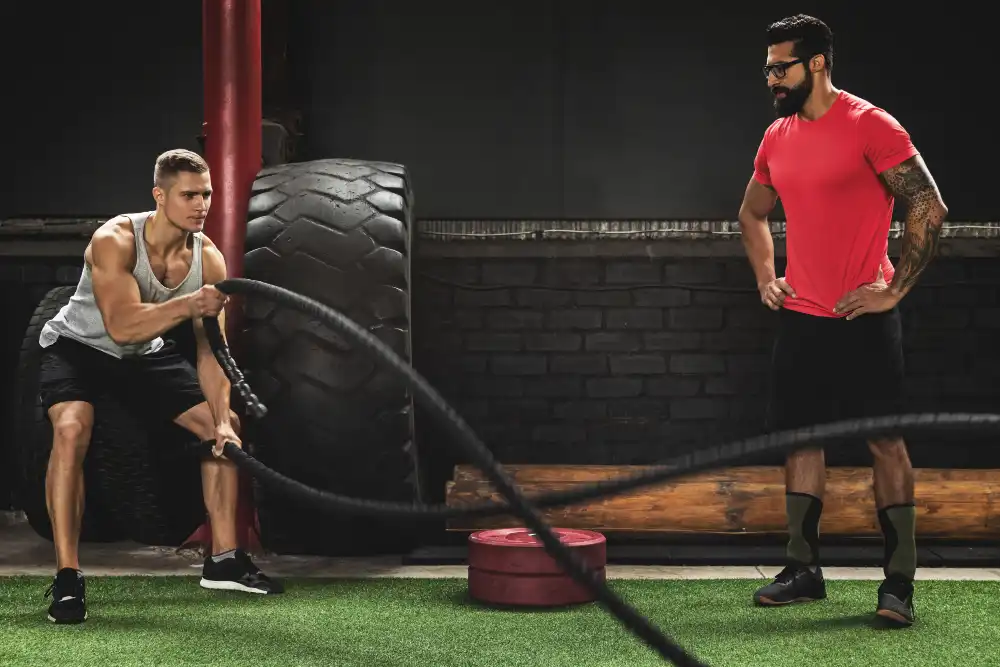Hey there, fitness enthusiast! Are you ready to embark on a journey to sculpt strength and transform your physique?
In this comprehensive guide, I will walk you through everything you need to know about building muscle through exercise. Whether you’re a seasoned gym-goer or a newbie to the fitness world, there’s something here for everyone.

Understanding Muscle Growth
Let’s kick things off by delving into the science behind muscle growth. Understanding how muscles grow is essential for maximizing your efforts in the gym. Muscle growth occurs in response to the stress placed on the muscles during resistance training. This stress triggers hypertrophy, where muscle fibers increase in size and strength.
Principles of Effective Strength Training
Now that we understand the basics of muscle growth let’s discuss the principles underpinning practical strength training. First up, we have progressive overload. This principle involves gradually increasing the demands on your muscles over time to stimulate growth. Next, we have specificity, which means targeting specific muscle groups with exercises tailored to their function. Finally, variation is crucial for preventing plateaus and keeping your workouts interesting.

Types of Exercises for Building Muscle
When it comes to building muscle, not all exercises are created equal. Compound exercises, such as squats, deadlifts, and bench presses, recruit multiple muscle groups simultaneously and should form the foundation of your workout routine. On the other hand, isolation exercises target specific muscles and help fine-tune your physique.
Creating a Workout Routine
Now that we’ve covered the basics, it’s time to assemble a workout routine that works for you. Start by setting clear and achievable goals, whether increasing strength, adding mass, or improving endurance. Next, choose exercises that align with your goals and create a split routine that allows adequate recovery time for each muscle group.
Nutrition for Muscle Growth
It’s no secret that nutrition plays a crucial role in muscle building. To fuel your gains, prioritize protein-rich foods such as lean meats, eggs, and dairy products. Carbohydrates provide energy for workouts, while healthy fats support hormone production and overall health. Aim for a balanced diet that provides all the nutrients your body needs to thrive.

Rest and Recovery
Don’t overlook the importance of rest and recovery in seeking gains. Muscles grow and repair themselves during rest periods, so incorporate rest days into your routine. Additionally, consider incorporating foam rolling, stretching, and massage to aid recovery and prevent injury.
Avoiding Common Mistakes
When it comes to strength training, there are a few common mistakes that can hinder your progress. Avoid overtraining by giving your muscles adequate time to recover between workouts. Additionally, prioritize proper form over lifting heavy weights, as poor form increases the risk of injury and limits muscle activation.
Tracking Progress
Tracking your progress is essential for staying motivated and making meaningful gains. Keep a workout journal to record your exercises, sets, and reps, and track your strength gains over time. Additionally, take regular progress photos to monitor changes in your physique visually.
Incorporating Cardiovascular Exercise
While strength training is the cornerstone of muscle building, don’t neglect cardiovascular exercise. Cardiovascular exercise improves heart health, boosts endurance, and can aid in fat loss, allowing your hard-earned muscles to shine through.
Supplementation
While supplements are not a substitute for a balanced diet and consistent training, they can complement your efforts and support muscle growth. Joint muscle-building supplements include protein powder, creatine, and branched-chain amino acids (BCAAs).
Injury Prevention
Injury prevention should be a top priority for any fitness enthusiast. Focus on maintaining proper form during exercises, and listen to your body’s signals to avoid overtraining and burnout. Taking a day off is better than risking sidelining yourself with a preventable injury.
Staying Motivated
Building muscle takes time, patience, and dedication, so staying motivated throughout your fitness journey is essential. Set realistic expectations for yourself, celebrate small victories along the way, and find enjoyment in the process. Remember, consistency is critical, and every workout brings you one step closer to your goals.
Adjusting Your Routine Over Time
As you progress on your fitness journey, you may encounter plateaus where progress stalls. This is normal and can be overcome by adjusting your routine through periodization. Periodization involves manipulating intensity, volume, and frequency variables to keep your body guessing and continue making gains.
Conclusion
Congratulations, you’ve reached the end of our guide to sculpting strength through exercise! Armed with the knowledge and strategies outlined here, you’re well-equipped to embark on your journey to a stronger, more muscular physique. Consistency is critical, so stay focused, stay motivated, and never underestimate the power of hard work and dedication.
FAQs
How long does it take to see results from strength training?
Results can vary depending on genetics, diet, and training intensity, but most people notice muscle tone and strength changes within a few weeks to a couple of months.
Do I need to lift heavy weights to build muscle?
While lifting heavy weights can contribute to muscle growth, it’s not the only way to build strength. Focus on challenging your muscles with progressively heavier weights while maintaining proper form.
Can I build muscle without consuming protein supplements?
You can build muscle without protein supplements by consuming a diet rich in whole foods that provide ample protein, such as meat, fish, eggs, dairy, legumes, and tofu.
How often should I change my workout routine?
Changing your workout routine every 4-6 weeks is a good idea to prevent boredom, avoid plateaus, and challenge your muscles. However, listen to your body and adjust based on your progress and goals.
Is it possible to build muscle while losing fat?
Yes, it is possible to simultaneously build muscle and lose fat, especially for beginners or individuals returning to training after a layoff. This can be achieved through resistance training, cardiovascular exercise, and a balanced diet.

